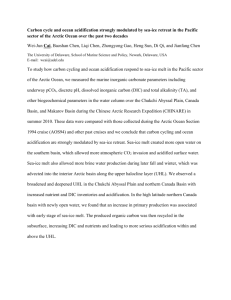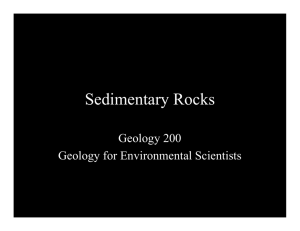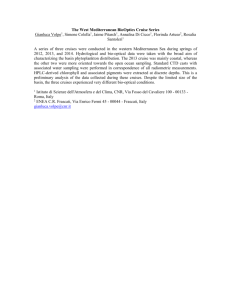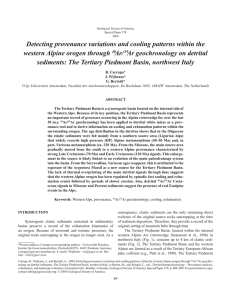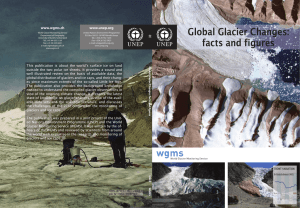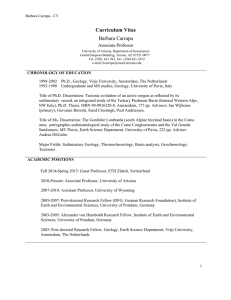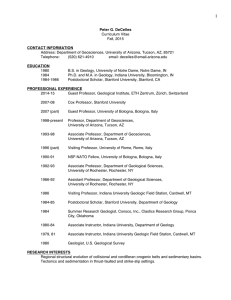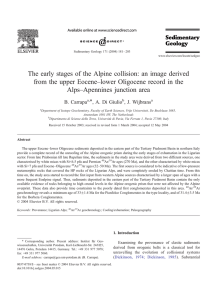Depositional Environment Of The Early Frasnian To Early
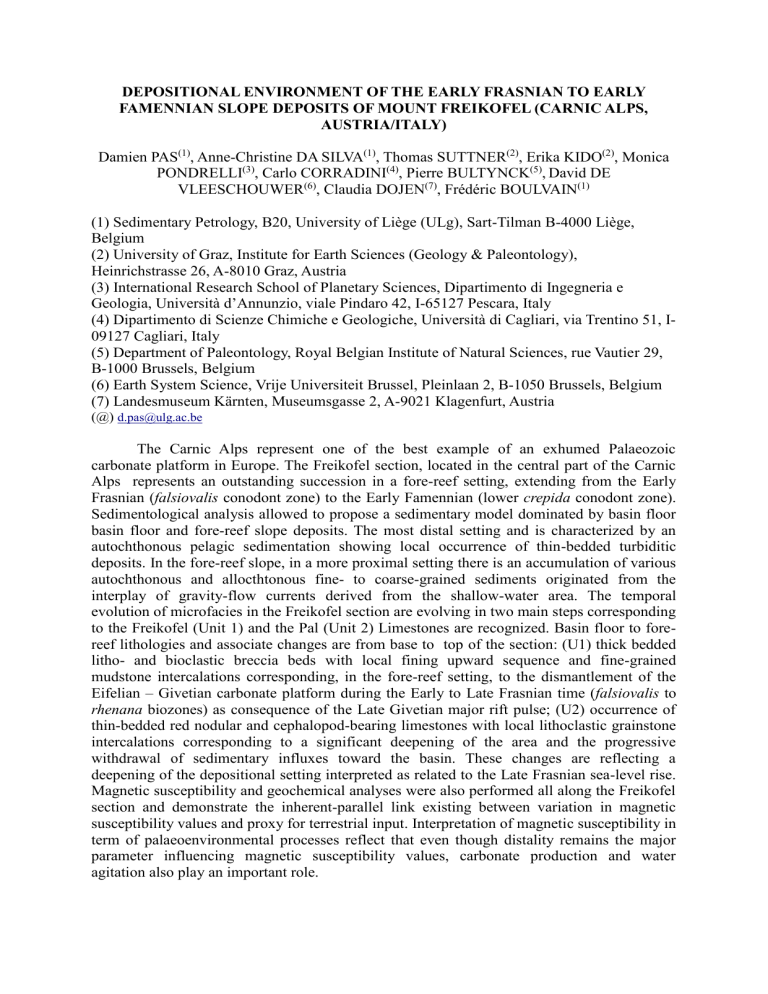
DEPOSITIONAL ENVIRONMENT OF THE EARLY FRASNIAN TO EARLY
FAMENNIAN SLOPE DEPOSITS OF MOUNT FREIKOFEL (CARNIC ALPS,
AUSTRIA/ITALY)
Damien PAS
(1)
, Anne-Christine DA SILVA
(1)
, Thomas SUTTNER
(2)
, Erika KIDO
(2)
, Monica
PONDRELLI
(3)
, Carlo CORRADINI
(4)
, Pierre BULTYNCK
(5)
, David DE
VLEESCHOUWER (6) , Claudia DOJEN (7) , Frédéric BOULVAIN (1)
(1) Sedimentary Petrology, B20, University of Liège (ULg), Sart-Tilman B-4000 Liège,
Belgium
(2) University of Graz, Institute for Earth Sciences (Geology & Paleontology),
Heinrichstrasse 26, A-8010 Graz, Austria
(3) International Research School of Planetary Sciences, Dipartimento di Ingegneria e
Geologia, Università d’Annunzio, viale Pindaro 42, I-65127 Pescara, Italy
(4) Dipartimento di Scienze Chimiche e Geologiche, Università di Cagliari, via Trentino 51, I-
09127 Cagliari, Italy
(5) Department of Paleontology, Royal Belgian Institute of Natural Sciences, rue Vautier 29,
B-1000 Brussels, Belgium
(6) Earth System Science, Vrije Universiteit Brussel, Pleinlaan 2, B-1050 Brussels, Belgium
(7) Landesmuseum Kärnten, Museumsgasse 2, A-9021 Klagenfurt, Austria
(@) d.pas@ulg.ac.be
The Carnic Alps represent one of the best example of an exhumed Palaeozoic carbonate platform in Europe. The Freikofel section, located in the central part of the Carnic
Alps represents an outstanding succession in a fore-reef setting, extending from the Early
Frasnian ( falsiovalis conodont zone) to the Early Famennian (lower crepida conodont zone).
Sedimentological analysis allowed to propose a sedimentary model dominated by basin floor basin floor and fore-reef slope deposits. The most distal setting and is characterized by an autochthonous pelagic sedimentation showing local occurrence of thin-bedded turbiditic deposits. In the fore-reef slope, in a more proximal setting there is an accumulation of various autochthonous and allocthtonous fine- to coarse-grained sediments originated from the interplay of gravity-flow currents derived from the shallow-water area. The temporal evolution of microfacies in the Freikofel section are evolving in two main steps corresponding to the Freikofel (Unit 1) and the Pal (Unit 2) Limestones are recognized. Basin floor to forereef lithologies and associate changes are from base to top of the section: (U1) thick bedded litho- and bioclastic breccia beds with local fining upward sequence and fine-grained mudstone intercalations corresponding, in the fore-reef setting, to the dismantlement of the
Eifelian – Givetian carbonate platform during the Early to Late Frasnian time ( falsiovalis to rhenana biozones) as consequence of the Late Givetian major rift pulse; (U2) occurrence of thin-bedded red nodular and cephalopod-bearing limestones with local lithoclastic grainstone intercalations corresponding to a significant deepening of the area and the progressive withdrawal of sedimentary influxes toward the basin. These changes are reflecting a deepening of the depositional setting interpreted as related to the Late Frasnian sea-level rise.
Magnetic susceptibility and geochemical analyses were also performed all along the Freikofel section and demonstrate the inherent-parallel link existing between variation in magnetic susceptibility values and proxy for terrestrial input. Interpretation of magnetic susceptibility in term of palaeoenvironmental processes reflect that even though distality remains the major parameter influencing magnetic susceptibility values, carbonate production and water agitation also play an important role.
